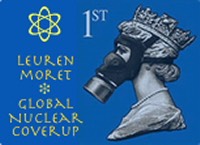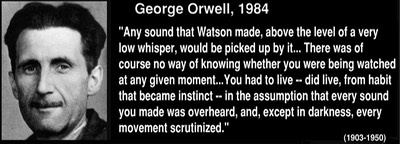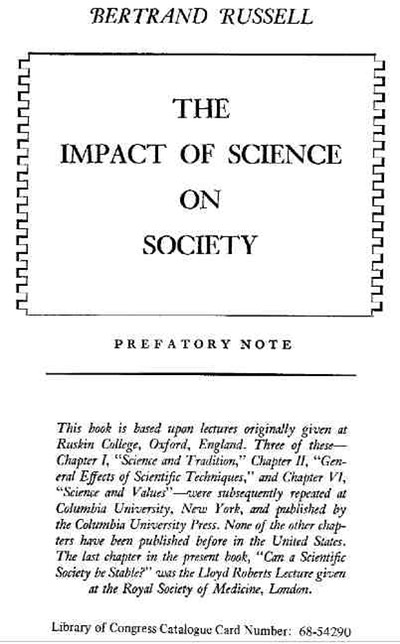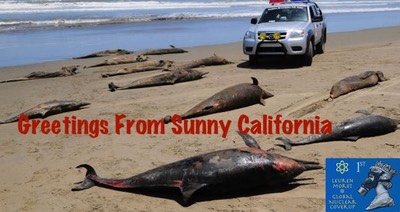Science uses specialized terms and language that have different meanings than everyday usage of words. These definitions correspond to the way scientists use these terms in the context of their work.
⚛ ⚛ ⚛ ⚛
I. Fundamentals - Definitions necessary to understand Terms in the alphabetical Glossary that follows:
⚛ ⚛ ⚛
THEORY: In the Scientific Method a theory must be based on facts which can be observed and/or measured, and theories that are scientists' explanations, hypotheses, and interpretations of the facts. Scientists can have various interpretations of the outcomes of experiments and observations, but facts that are the cornerstone of the Scientific Method do not change. A good theory is formed from a number of hypotheses that can be tested and verified repeatedly and independently.
The word "theory" in a non-scientific context, implies that something is unproven or speculative. (Here at LM:GNC we Strongly favor scientific -ed)
⚛ ⚛ ⚛
HYPOTHESIS: A scientific hypothesis is an "educated guess", or suggested solution based on prior knowledge, intuition, and observation, explaining the cause of a particular phenomenon. A scientific hypothesis has to be something that can be supported or refuted through scientific experimentation or observation. A conceptual framework is formed by a group of hypotheses that can be connected and their relationships tested. As data and evidence are gathered to support a hypothesis, it becomes a working hypothesis on its way to becoming a theory.
⚛ ⚛ ⚛
FACT: a scientific observation that has been confirmed by testing repeatedly and is accepted as true (although its truth is never final). Any scientific observation that has not been refuted.
⚛ ⚛ ⚛ ⚛
II. Alphabetical Glossary
BECQUEREL: (symbol Bq) (pronounced: 'be-kə-rel) is the "Système International d’Unités" derived unit of radioactivity. One Bq is defined as the activity of a quantity of radioactive material in which one nucleus decays per second. The becquerel is named after Henri Becquerel, who shared a Nobel Prize with Pierre and Marie Curie in 1903 for their work in discovering radioactivity.
BREMSSTRAHLUNG: (German pronunciation: [ˈbʁɛmsˌʃtʁaːlʊŋ] ( listen), from bremsen "to brake" and Strahlung "radiation", i.e. "braking radiation" or "deceleration radiation") is electromagnetic radiation produced by the deceleration of a charged particle when deflected by another charged particle, typically an electron by an atomic nucleus. The moving particle loses kinetic energy, which is converted into a photon, thus satisfying the law of conservation of energy. The term is also used to refer to the process of producing the radiation. Bremsstrahlung has a continuous spectrum, which becomes more intense and whose peak intensity shifts toward higher frequencies as the change of the energy of the accelerated particles increases.
DNA: A large molecular structure in the center of the cell that contains the information for the function of the cell as well as for the transference of the genetic characteristics.
ENTROPY:
- In classical physics, the entropy of a physical system is proportional to the quantity of energy no longer available to do physical work. Entropy is central to the second law of thermodynamics, which states that in an isolated system any activity increases the entropy.
- In quantum mechanics, von Neumann entropy extends the notion of entropy to quantum systems by means of the density matrix.
- In probability theory, the entropy of a random variable measures the uncertainty about the value that might be assumed by the variable.
- In information theory, the compression entropy of a message (e.g. a computer file) quantifies the information content carried by the message in terms of the best lossless compression rate.
- In the theory of dynamical systems, entropy quantifies the exponential complexity of a dynamical system or the average flow of information per unit of time.
- In sociology, entropy is the natural decay of structure (such as law, organization, and convention) in a social system.
- In the common sense, entropy means decline, disorder, chaos.
________________________________________________
EPA: The U.S. Environmental Protection Agency that sets standards for permissible amounts of toxic chemicals that can be discharged into the air and drinking water.
FREE RADICAL: A molecule such as a normally electrically neutral oxygen molecule to which an extra electron is attached, making it capable of doing damage to or killing living cells.
FISSION PRODUCT: A chemical that results from the splitting in two of the nucleus of a heavy element such as Uranium or Plutonium and is generally radioactive, that is, it emits powerful particles like electrons or gamma rays from its nucleus.
GAMMA RAY: A powerful form of radiation or light, like an X-ray that is emitted from the nucleus of certain atoms such as those formed in the normal radioactive decay of Uranium like Radon and in many of its fission products, such as Iodine–131.
HYDROVOLCANIC EXPLOSION: A geological term referencing particularly violent volcanic eruptions involving the mixture of water with magma.
HYPOTHYROIDISM: A condition in which the thyroid gland is under-active, reducing the normal production of thyroid hormones. When present at birth, it leads to cognitive problems as well as retarded growth. In adults, it leads to slowness of thinking and obesity.
INCIDENCE RATE: The number of newly diagnosed cases of a disease each year per unit population, such as the number of cancer cases reported per hundred thousand people to government agencies in recent years, in contrast to the mortality rate that has been available for many decades.
INFANT MORTALITY RATE: The number of babies under one year of age that die each year per thousand babies born.
IODINE–131: A fission product that is an intense source of radiation, sending out all its powerful gamma rays and electrons that break up molecules in just a few weeks after it is created in the fission of a Uranium nucleus. Since it concentrates in the thyroid, it produces hypothyroidism, growth retardation, cognitive impairment and thyroid cancer. When its radiation damages the thyroid of a pregnant female, especially in the first trimester, it leads to premature birth, which is associated with a higher risk of infant mortality and developmental problems for the child.
LOW BIRTH WEIGHT: Babies that are born with a weight of less than 5.5 pounds or 2.5 kilograms, mostly associated with premature birth, often leading to infant mortality, developmental problems and illness in later in life.
NRC: The Nuclear Regulatory Commission has the responsibility for the safe operation of all commercial nuclear reactors in the nation, establishing licensing procedures and setting limits on permissible discharges of radioactive fission products into the air and water.
NUCLEAR REACTOR: A nuclear reactor is the heart of a nuclear power station, a thick-walled steel vessel containing rods filled with uranium pellets surrounded by water or gas that heats the water or gas to a high temperature, performing the same function as a coal or gas burner in an ordinary fossil fuel plant. In the case of water cooled nuclear power plant of the Boiling Water Reactor or BWR type, the water is turned into steam that is piped to the turbines in a separate building which generates electricity. In a Pressurized Water Reactor (PWR), the hot water is taken to a heat exchanger and generates steam in another closed loop which powers the turbines.
PLUTONIUM: This is a heavy, radioactive element not found in nature in significant amounts. It is created in nuclear reactors fueled with Uranium as a result of the absorption of neutrons emitted by a particular isotope or type of Uranium, namely Uranium–235 in the course of the operation of the reactor by the dominant form, Uranium–238. The different isotopes of Plutonium have different uses, one makes a type of bomb, the other a long-lasting heat source used to power scientific instruments in satellites, or a fuel for a type of reactor.
POLYMATH: a very learned person, an expert in many fields.
PONEROLOGY: (1) The practice of Evil. (2) The study or science of Evil.
RAD: A rad is a unit of energy absorbed per gram of matter or tissue, in the X-rays, gamma rays or particles emitted from a radioactive element such as Uranium–235, Iodine–131 or Strontium–90. A millirad is 1/1000 of a rad, and normal background radiation from radioactive elements in the ground, in the air or from cosmic rays produces an annual dose of the order of 100 to 400 millirads in the human body.
RADIOLYSIS: Molecular Decomposition of a Substance as a Result of Radiation.” – http://www.thefreedictionary.com/radiolytic
• Pissin’ On The Roses has a good piece on RADIOLYSIS. It is here: http://pissinontheroses.blogspot.it/2015/11/radiolysis-explosive-danger-at-west.html
REPROCESSING PLANT: A facility that takes the spent Uranium nuclear fuel from a nuclear reactor and chemically extracts Plutonium from it, which was formed by the absorption of slowed down neutrons emitted by the Uranium in the course of fission. Because the spent fuel contains many fission products, is very radioactive and thus emits powerful gamma rays and other particles for a long time, it is a very dangerous facility, releasing very toxic elements into the environment. The Plutonium can be used either to make a type of nuclear bomb, or another form of fuel for a nuclear plant.
SAT: This is the Scholastic Aptitude Test commonly taken by high school students who want to enter a college, typically at age 18. It tests for both, mathematical knowledge as well as reading and writing ability. (classic definition) ⚛However⚛
The Entrance Examinations are being diminished to keep pace with the diminishing intelligence of the American population due to ionizing radiation. (-ed)
In September 2012, it was announced that for the first time in history more students took the ACT than the SAT (and that trend continued in 2013). A few months later in February, College Board President David Coleman first announced major changes would be coming to the test.
Shaan Patel, Director of SAT Programs for Veritas Prep, says there are many things about the new SAT that reflect the ACT: There will be no obscure vocabulary, the essay will be optional, no points are removed for incorrect answers and there will be more of an emphasis on textual evidence across disciplines. ACT President Jon Erickson said on hearing of the changes to the SAT, "They could've been talking about the ACT now."
"It's a good move that it's becoming easier in way, but it's also a very bad move in that I think it's sort of a race to the bottom now," Patel says, adding that "when and if" the ACT makes its next change, it might lower its standards to remain competitive against the SAT.
http://www.usnews.com/news/articles/2014/03/10/behind-the-sat-the-good-and-bad-of-the-2016-redesign
SLAVERY: (2) Articles; America’s Formation (w/Fwd) & Now:
1. ✍$Who Brought the Slaves to America?♔
2. 💀 Neo-Capitalist’s Slave Trade 💰
URANIUM: Uranium is a heavy radioactive element found in nature, some isotopes of which have the property that they break up or fission when they absorb a slowly moving neutron, giving off a very large amount of energy or heat in the process, namely the one that has a mass of 235 protons and neutrons in its nucleus. One pound of this isotope can produce the same energy as 1500 tons of coal, but it occurs as less than one percent of all the Uranium, which consists mainly of the form that has a mass of 238 units which does not fission when it absorbs a slow neutron in a reactor. Thus, a difficult and costly process is required to separate out the Uranium–235 used in a reactor or as an explosive in a bomb, a so-called enrichment process. This results in Uranium with a little less of Uranium–235, so-called depleted Uranium. Because of the long life of both of these isotopes and their radioactivity lasting millions of years, they represent a very toxic threat to human health in the form of fine particles created when Uranium ammunition impacts armour or a hard surface and burns, forming a poisonous gas of Uranium oxide that can travel long distances in the air, carried by prevailing winds around the world.
⚛
⚛
⚛
⚛
⚛
Visitors to LM:GNC







![20120724 - 7-24-2012 The More We Learn - quote from David Rockfeller -_thumb[2]](_Media/20120724---7-24-2012-the_med_hr.jpeg)

